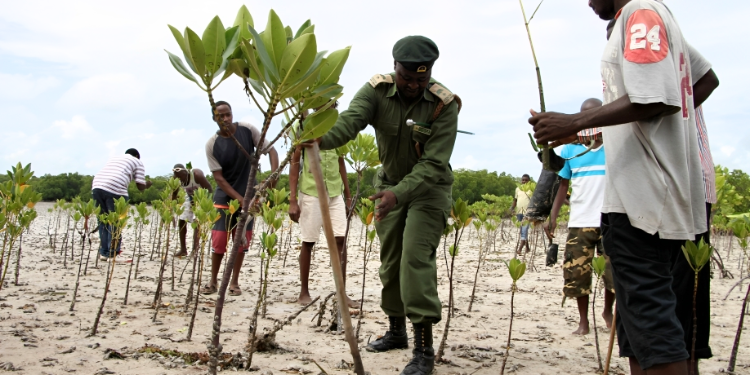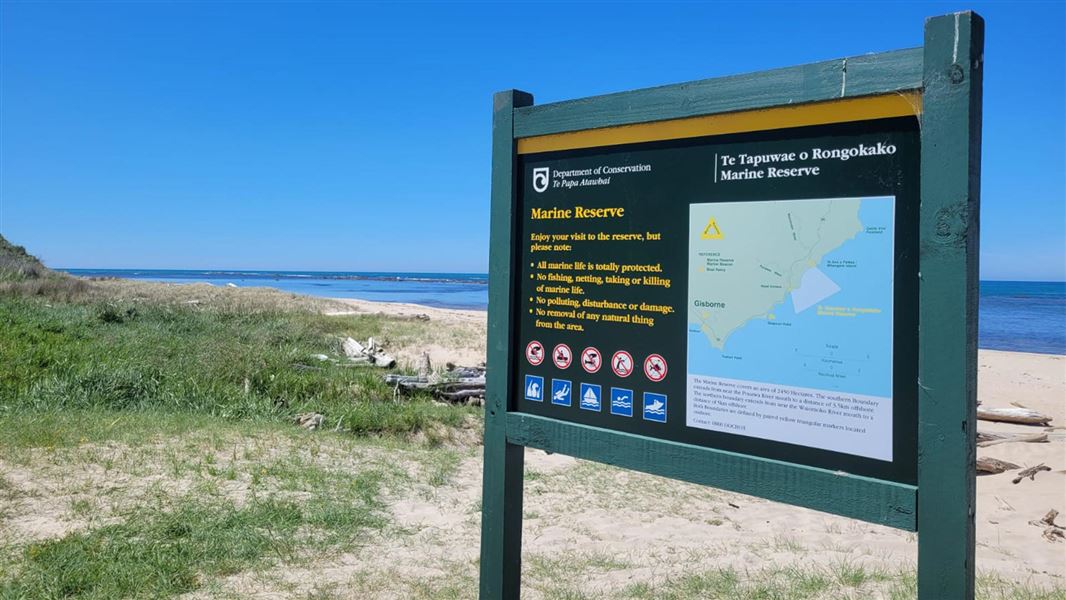Step-by-Step Guide To Applying For A Coastal Zone Management Permit – The Kenya Times

Report on the Application Process for a Coastal Zone Management Permit in Kenya and its Alignment with Sustainable Development Goals (SDGs)
1.0 Introduction: The Integrated Coastal Zone Management (ICZM) Framework
The application procedure for a Coastal Zone Management Permit in Kenya is governed by the Integrated Coastal Zone Management (ICZM) Policy, administered by the National Environment Management Authority (NEMA). This framework is designed to ensure that coastal development is ecologically sound, socially equitable, and economically viable, directly contributing to the achievement of several Sustainable Development Goals (SDGs).
- SDG 14 (Life Below Water): The policy’s primary objective is the conservation and sustainable use of marine and coastal ecosystems.
- SDG 13 (Climate Action): It promotes the protection of coastal habitats like mangroves, which are critical for climate resilience and carbon sequestration.
- SDG 11 (Sustainable Cities and Communities): The framework guides sustainable planning and management of coastal settlements and infrastructure.
2.0 Procedural Steps for Permit Application
-
Environmental Impact Assessment (EIA)
The initial mandatory step is the completion of an Environmental Impact Assessment (EIA) conducted by a NEMA-licensed expert. The EIA evaluates the potential environmental, social, and economic impacts of a proposed project, ensuring a holistic approach to development.
- SDG Alignment: This process is fundamental to SDG 12 (Responsible Consumption and Production) by assessing project sustainability. It also supports SDG 14 (Life Below Water) and SDG 15 (Life on Land) by identifying and mitigating potential harm to marine and terrestrial ecosystems.
-
NEMA Approval and EIA License Issuance
Following a satisfactory review of the EIA report, NEMA issues an EIA license. This license is a prerequisite for any development activity within the coastal zone, including construction, aquaculture, and resource extraction, signifying compliance with national environmental standards.
- SDG Alignment: The issuance of a NEMA license strengthens institutional frameworks for environmental protection, contributing to SDG 16 (Peace, Justice and Strong Institutions).
-
County Government Approvals
Developers must obtain approvals from the relevant county government. This includes the endorsement of architectural and structural plans and confirmation of compliance with local zoning and land-use regulations.
- SDG Alignment: This step ensures that development aligns with local spatial plans, directly supporting SDG 11 (Sustainable Cities and Communities) by promoting planned and resilient urban and rural development.
-
Acquisition of Additional Sectoral Permits
Depending on the nature of the project, multiple additional permits from various government agencies are required. These ensure specialized regulatory compliance.
- Water Resources Authority (WRA): Water abstraction permits, supporting SDG 6 (Clean Water and Sanitation).
- State Department for the Blue Economy and Fisheries: Permits for marine resource use, aligning with SDG 14 (Life Below Water) and SDG 8 (Decent Work and Economic Growth).
- Tourism Regulatory Authority (TRA): Licenses for tourism facilities, promoting sustainable tourism under SDG 8.
- National Museums of Kenya: Permits for projects near heritage sites, contributing to SDG 11.4 (Protect cultural and natural heritage).
- Kenya Forest Service (KFS): Permits for activities affecting coastal forests and mangroves, crucial for SDG 15 (Life on Land) and SDG 13 (Climate Action).
- Kenya Maritime Authority (KMA): Clearance for maritime infrastructure, ensuring safety and environmental protection in line with SDG 9 (Industry, Innovation and Infrastructure) and SDG 14.
-
Stakeholder and Community Engagement
The ICZM framework mandates comprehensive stakeholder engagement. Developers must consult with local communities, civil society organizations, and relevant authorities. This feedback must be documented and integrated into the EIA report.
- SDG Alignment: This process promotes inclusive and participatory decision-making, which is a core tenet of SDG 16 (Peace, Justice and Strong Institutions). It also fosters collaboration, supporting SDG 17 (Partnerships for the Goals).
-
Final Application Submission
The complete application package is submitted to NEMA through its official Environmental Licensing Portal. The submission is reviewed for full compliance with all legal and ICZM principles.
Required Documentation:
- Approved Environmental Impact Assessment (EIA) license
- County government-approved architectural and structural plans
- All relevant sectoral permits
- Documentation of stakeholder engagement processes and outcomes
- A detailed project description with location maps
Analysis of Sustainable Development Goals in the Article
1. Which SDGs are addressed or connected to the issues highlighted in the article?
- SDG 6: Clean Water and Sanitation – Through the regulation of water resources.
- SDG 8: Decent Work and Economic Growth – By promoting sustainable tourism.
- SDG 11: Sustainable Cities and Communities – Through land use planning and protection of cultural heritage.
- SDG 12: Responsible Consumption and Production – By ensuring the sustainable management of natural resources.
- SDG 14: Life Below Water – As the central theme is the management and protection of coastal and marine ecosystems.
- SDG 15: Life on Land – Through the management of coastal forests and mangroves.
- SDG 16: Peace, Justice and Strong Institutions – By establishing transparent, accountable institutions and inclusive decision-making processes.
- SDG 17: Partnerships for the Goals – Through the required collaboration between multiple government agencies and stakeholders.
2. What specific targets under those SDGs can be identified based on the article’s content?
-
SDG 6: Clean Water and Sanitation
- Target 6.5: By 2030, implement integrated water resources management at all levels. The article highlights this through the role of the Water Resources Authority (WRA), which issues water abstraction permits governed by the Water Act, 2016, and requires hydrological assessments, demonstrating a framework for integrated management.
-
SDG 8: Decent Work and Economic Growth
- Target 8.9: By 2030, devise and implement policies to promote sustainable tourism that creates jobs and promotes local culture and products. The article mentions that tourism developments must be licensed by the Tourism Regulatory Authority (TRA) to ensure compliance with environmental and operational standards, which supports the goal of sustainable tourism.
-
SDG 11: Sustainable Cities and Communities
- Target 11.4: Strengthen efforts to protect and safeguard the world’s cultural and natural heritage. This is addressed by the requirement for projects near historical or cultural sites to obtain permits from the National Museums of Kenya, often necessitating “archaeological impact assessments to safeguard heritage assets.”
-
SDG 12: Responsible Consumption and Production
- Target 12.2: By 2030, achieve the sustainable management and efficient use of natural resources. The entire process described, centered on the Environmental Impact Assessment (EIA), is designed to ensure that coastal developments manage and use natural resources like water, marine life, and forests sustainably.
-
SDG 14: Life Below Water
- Target 14.2: By 2020, sustainably manage and protect marine and coastal ecosystems to avoid significant adverse impacts. The article’s focus on the Integrated Coastal Zone Management (ICZM) Policy and the requirement for an EIA for any coastal development directly supports the protection and sustainable management of these ecosystems.
- Target 14.7: By 2030, increase the economic benefits to Small Island developing States and least developed countries from the sustainable use of marine resources, including through sustainable management of fisheries, aquaculture and tourism. The regulation of aquaculture, fishing, and tourism infrastructure, as mentioned in the article, aims to ensure their activities are sustainable, thereby securing long-term economic benefits.
-
SDG 15: Life on Land
- Target 15.2: By 2020, promote the implementation of sustainable management of all types of forests, halt deforestation, restore degraded forests and substantially increase afforestation and reforestation globally. This is directly addressed by the Kenya Forest Service (KFS) overseeing permits for “mangrove harvesting and coastal forest use,” which require “sustainable use plans and reforestation commitments.”
-
SDG 16: Peace, Justice and Strong Institutions
- Target 16.6: Develop effective, accountable and transparent institutions at all levels. The article details a clear, legally-grounded process managed by institutions like NEMA, with applications submitted via an “Environmental Licensing Portal,” which points to the development of accountable and transparent systems.
- Target 16.7: Ensure responsive, inclusive, participatory and representative decision-making at all levels. The article states that “Stakeholder engagement is mandatory,” requiring developers to consult with “affected communities,” “local authorities,” and “civil society” and to integrate their feedback into the EIA report.
-
SDG 17: Partnerships for the Goals
- Target 17.14: Enhance policy coherence for sustainable development. The process described requires approvals from numerous agencies (NEMA, WRA, KFS, County Governments, TRA), forcing a coherent application of environmental, water, forestry, and land use policies for any single development project.
3. Are there any indicators mentioned or implied in the article that can be used to measure progress towards the identified targets?
-
SDG 12 & 14: Responsible Consumption and Production & Life Below Water
- Indicator: The issuance of an EIA license by NEMA. The article states that this license “confirms that the proposed development complies with environmental regulations and ICZM principles.” The number of licenses granted under these terms measures the application of sustainable management practices.
-
SDG 15: Life on Land
- Indicator: The inclusion of “sustainable use plans and reforestation commitments” in permits for mangrove harvesting. This is a specific, measurable action mentioned in the article that demonstrates progress towards sustainable forest management.
-
SDG 16: Peace, Justice and Strong Institutions
- Indicator: The requirement for “Stakeholder engagement documentation” as part of the final application package. This provides tangible proof that participatory decision-making processes are being followed.
-
SDG 6: Clean Water and Sanitation
- Indicator: The use of “hydrological assessments to determine sustainable extraction levels” for water abstraction permits. This implies a data-driven approach to water resource management that can be tracked.
-
SDG 11: Sustainable Cities and Communities
- Indicator: The requirement for “Archaeological impact assessments” for projects near cultural sites. The number and outcomes of these assessments can measure the effort to safeguard heritage.
4. Summary Table of SDGs, Targets, and Indicators
| SDGs | Targets | Indicators |
|---|---|---|
| SDG 6: Clean Water and Sanitation | 6.5: Implement integrated water resources management. | Requirement for hydrological assessments to determine sustainable water extraction levels before issuing permits. |
| SDG 8: Decent Work and Economic Growth | 8.9: Promote sustainable tourism. | Licensing of tourism developments by the Tourism Regulatory Authority (TRA) based on environmental and safety standards. |
| SDG 11: Sustainable Cities and Communities | 11.4: Protect and safeguard cultural and natural heritage. | Requirement for permits from the National Museums of Kenya and archaeological impact assessments for projects near heritage sites. |
| SDG 12: Responsible Consumption and Production | 12.2: Achieve sustainable management and efficient use of natural resources. | The mandatory Environmental Impact Assessment (EIA) process and issuance of an EIA license by NEMA. |
| SDG 14: Life Below Water | 14.2: Sustainably manage and protect marine and coastal ecosystems. | Implementation of the Integrated Coastal Zone Management (ICZM) Policy for all coastal development. |
| SDG 15: Life on Land | 15.2: Promote sustainable management of all types of forests. | Inclusion of “sustainable use plans and reforestation commitments” in permits for mangrove and coastal forest use. |
| SDG 16: Peace, Justice and Strong Institutions | 16.7: Ensure responsive, inclusive, and participatory decision-making. | Mandatory “Stakeholder engagement documentation” required in the permit application. |
| SDG 17: Partnerships for the Goals | 17.14: Enhance policy coherence for sustainable development. | The requirement for multiple, cross-sectoral permits from different authorities (NEMA, WRA, KFS, etc.) for a single project. |
Source: thekenyatimes.com
What is Your Reaction?
 Like
0
Like
0
 Dislike
0
Dislike
0
 Love
0
Love
0
 Funny
0
Funny
0
 Angry
0
Angry
0
 Sad
0
Sad
0
 Wow
0
Wow
0
















































/environment-climate-change-and-health-(ech)/water-sanitation-hygiene-and-health-(wsh)/landfill-tuvalu-36092.tmb-1200v.jpg?sfvrsn=5c21fe40_1#)

.jpg.webp?itok=0ZsAnae9#)

























